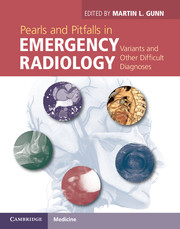Case 10 - Pineal cyst
from Neuroradiology: extra–axial and vascular
Published online by Cambridge University Press: 05 March 2013
Summary
Imaging description
Pineal cysts are common incidental findings detected on CT and MRI. They are round or oval in shape, and may be unilocular or multilocular. On CT, the cyst will demonstrate hypoattenuation compared with brain parenchyma, and there may be pineal calcifications adjacent to the cyst periphery. Most cysts are 2–15 mm in diameter. Thin-section images and sagittal reformatted images are often helpful in their evaluation (Figures 10.1 and 10.2).
Sometimes it is difficult to confirm the benign nature of a cystic pineal lesion on a routine head CT, so a MRI is obtained. Features of a benign pineal cyst include thin walls and lack of a solid internal component. The cyst walls will normally enhance, but the enhancement should be smooth and linear. The cyst contents will often differ in signal from cerebrospinal fluid (CSF), and FLAIR images often show non-suppression of signal.
High-resolution MR sequences, such as balanced steady state free precession (SSFP) and constructive interference steady state (CISS) sequences, may demonstrate internal architecture such as thin internal septations and smaller internal cysts. These findings should not be viewed as suspicious for malignancy [1].
A cyst may enlarge over time due to hemorrhage or accumulation of fluid. This may result in local mass effect. Compression of the superior colliculus may result in upward gaze palsy (Parinaud syndrome), and effacement of the cerebral aqueduct may lead to obstructive hydrocephalus (Figure 10.3). Thus, it is important to assess the relationship of the cyst to adjacent structures, specifically the tectal plate and cerebral aqueduct.
Information
- Type
- Chapter
- Information
- Pearls and Pitfalls in Emergency RadiologyVariants and Other Difficult Diagnoses, pp. 32 - 35Publisher: Cambridge University PressPrint publication year: 2013
